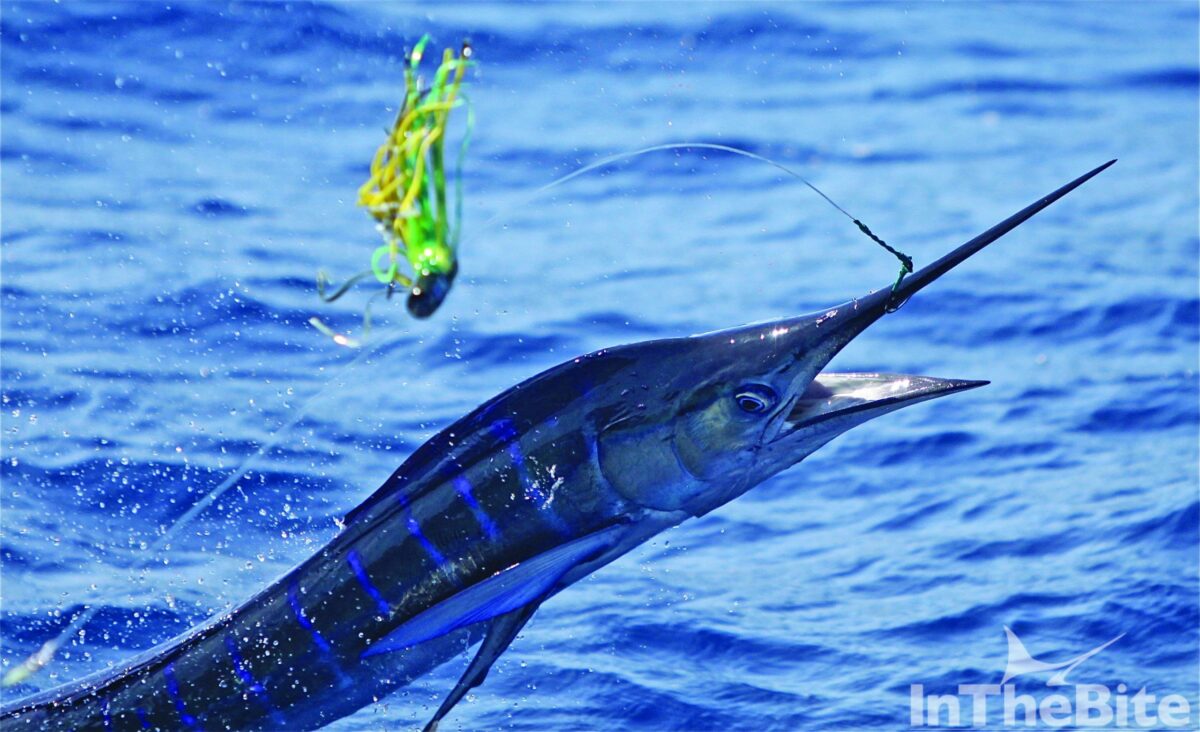For the most part, the playing field is pretty even, states pro skipper Captain Andy Kubiak, the one difference is bait. Dock talk and the internet spread new techniques and tackle like wildfire; secrets dont stay secrets for long. Today professional crews are seasoned, synchronized and sober. So, victory or defeat are determined by the details. Having the best bait can be the difference between winning and losing, Kubiak insists.

On the Tournament Trail
Captain Andy Kubiak is one of the original bait snobs; We fished a lot of rigged mullet back in the seventies, he recalls. At the time, mullet were prepared by removing the backbone and splitting the tail. Those baits were good for hooked rigs because they were mostly skin without a lot of meat, he explains. When dredges hit the scene, Kubiak didnt like the split tail mullet he was using. I wanted something that would move better, so I started cutting my own bait. To insure he was using the best bait available, he manages every step from the time the bait is pulled from the water until it goes into his spread. Either I catch the bait myself or I rely on a trusted source, he says. The bait is handled gently and immediately placed into a brine to preserve color and texture. Kubiak looks for bright colors and strong contrasts. Mullet should have a dark black tail, he insists, and ballyhoo should keep the bright yellow tail. He looks for all the scales in place and clear eyes. There shouldnt be a lot of blood or poop in the bag, he adds. When it comes time to thaw the bait, he keeps it in the package that he places in a bucket of saltwater. Never let the bait touch freshwater, he stresses. Fresh water will suck any salt out of the bait and leave it mushy and dull. Once the bait is thawed, Kubiak places special attention on how it is rigged. Be sure that the mullet heads are tied up tight with the mouth shut and the bait secured to the rig. Properly rigged, a mullet should last all day on a dredge. Crews are rigging 200 to 300 mullet and as many ballyhoo for a weekend tournament. The true test is when I see a half-dozen billfish on my dredge, he says. Captain Kevin Paul has been a bait snob since birth; he grew up in a high-end seafood market and came to age on a South Florida charter boat. I knew what it takes to produce the best-quality seafood, he recalls, and I expected the same out of my bait.
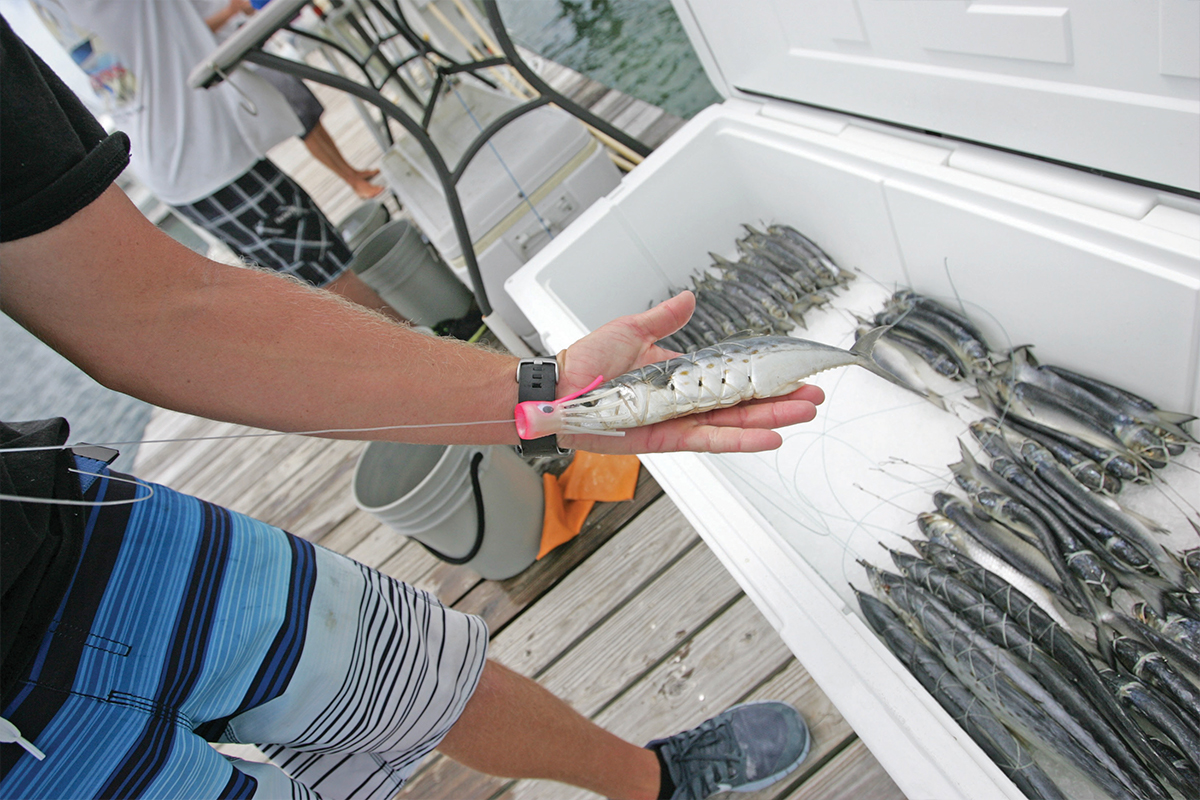
Bait snobs know, success depends on the best bait. Photo courtesy Ric Burnley
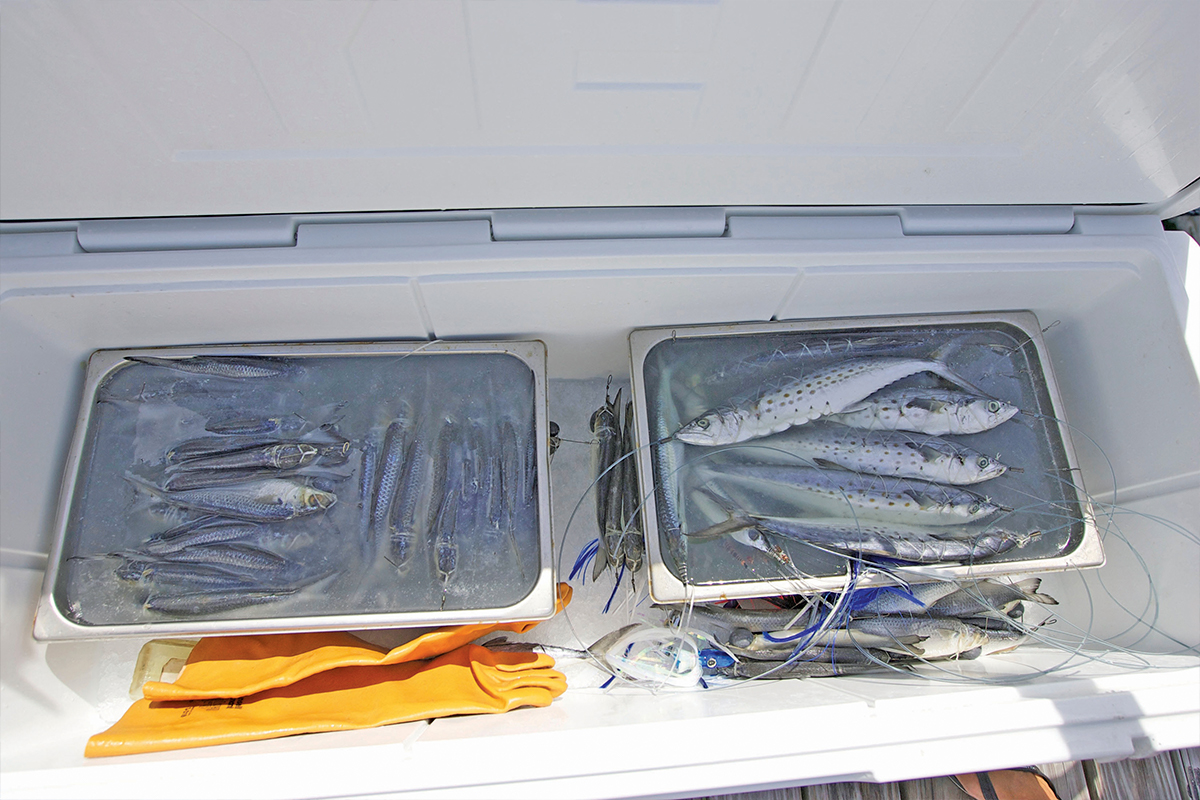
“Never let bait touch freshwater,” stresses Capt. Andy Kubiak. Freshwater will suck any salt out of the bait and leave it mushy and dull. Photo courtesy Ric Burnley
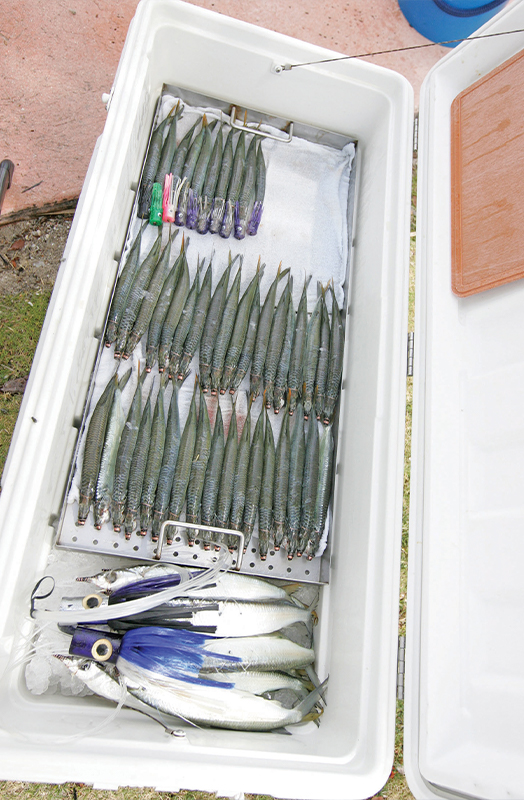
Photo courtesy Ric Burnley
The Northeast Perspective
While ballyhoo and mullet are hitting the docks along the Northeast, New England anglers have taken prepping chunk baits to an art form. The center of the action is J&B Bait and Tackle in Niantic, Connecticut where owner Kyle Douton is a bait snob since birth. When I was in elementary school my dad and I would drive to the distributors and load the pick up with bait, he reminisces. Now, Douton gets his bait delivered to the shop, but he been known to go the extra mile. During a hot tuna bite last year, a butterfish shortage had him on the road. We would drive to Manhattan and buy food quality butterfish, he says. When Douton picks up a flat of bunker he looks for bright colors, intact fins, clear eyes and a light coating of frost. On spring tuna trips, hell take two or three flats, but by the early fall he up to ten flats of bait. The water temperature is higher and the night is longer, he explains, so we need more bait. If the day-time chunking bite is hot, hell take more flats. He warns, Some guys are getting bait directly from draggers, but if it isnt flash frozen it will turn out mushy. He also added herring and even sardines to his chunk menu. When it comes to squid, Douton says the best bet is to catch fresh squid on the fishing grounds. Use a squid jig or a long-handled, fine-meshed squid net to catch squid that come to the light, he suggests. Adding a little stream of menhaden chum will bring more squid to the lights. Douton says some crews have even figured out how to catch squid and keep it alive between trips.
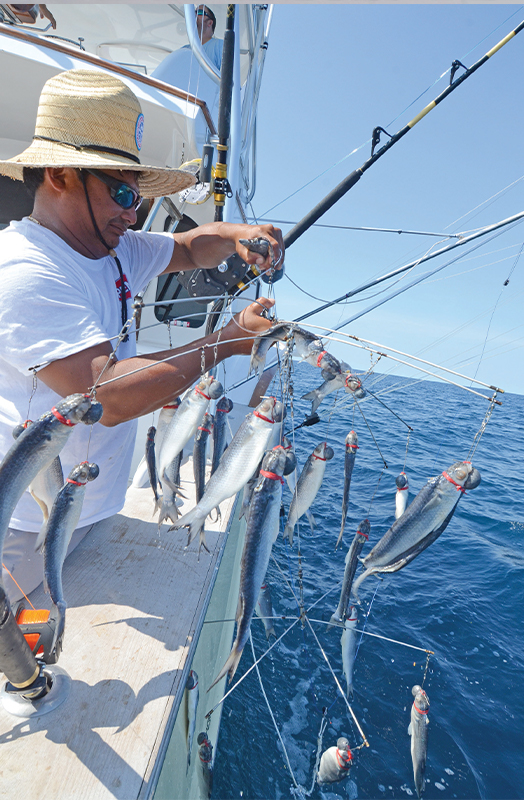
Photo courtesy Ric Burnley
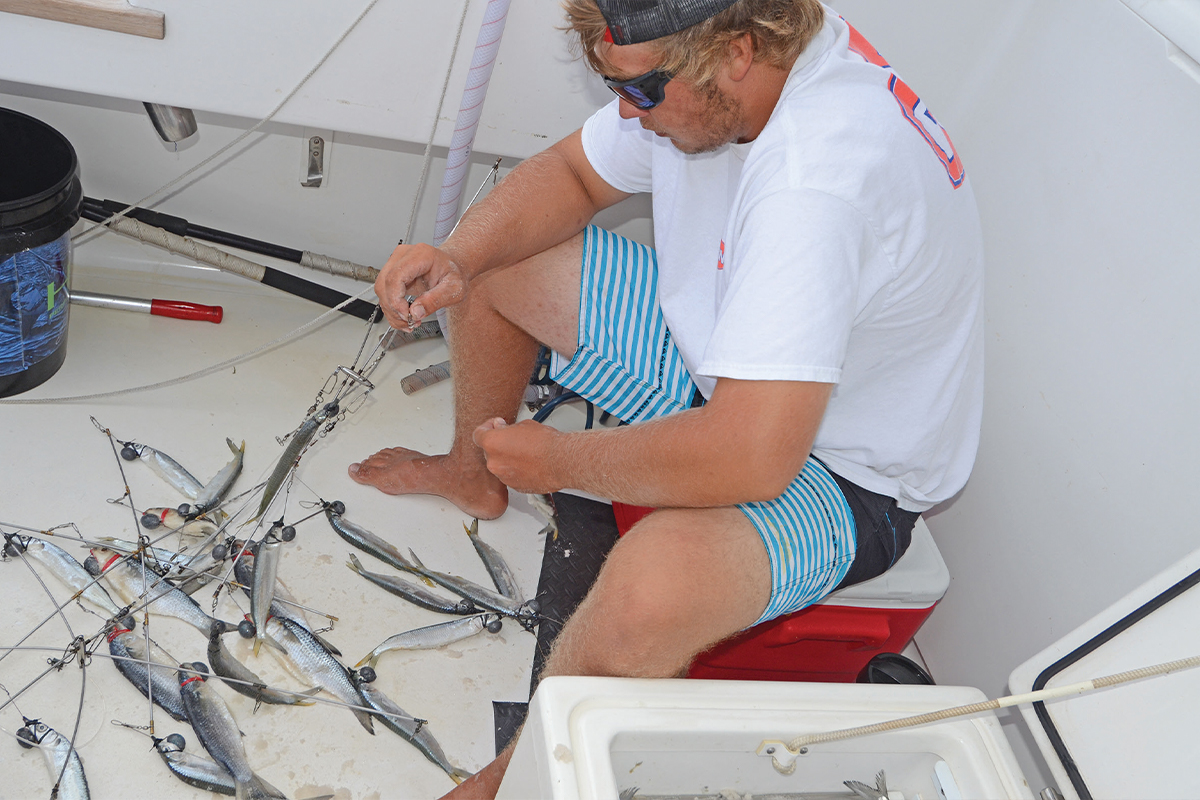
Keep baits cold, out of the sun, and coated with salt before deploying into the spread. Photo courtesy Ric Burnley
Not much debate¦
When it comes to bait, only the best will do. Bait snobs know that the best preparation and the most expensive gear wont make up for bad bait at the end of the line. Captain Kevin Paul puts it this way: If the bait is right, the crew did their work, and the boss opened his wallet, then there is no excuse for a bad day except bad luck.
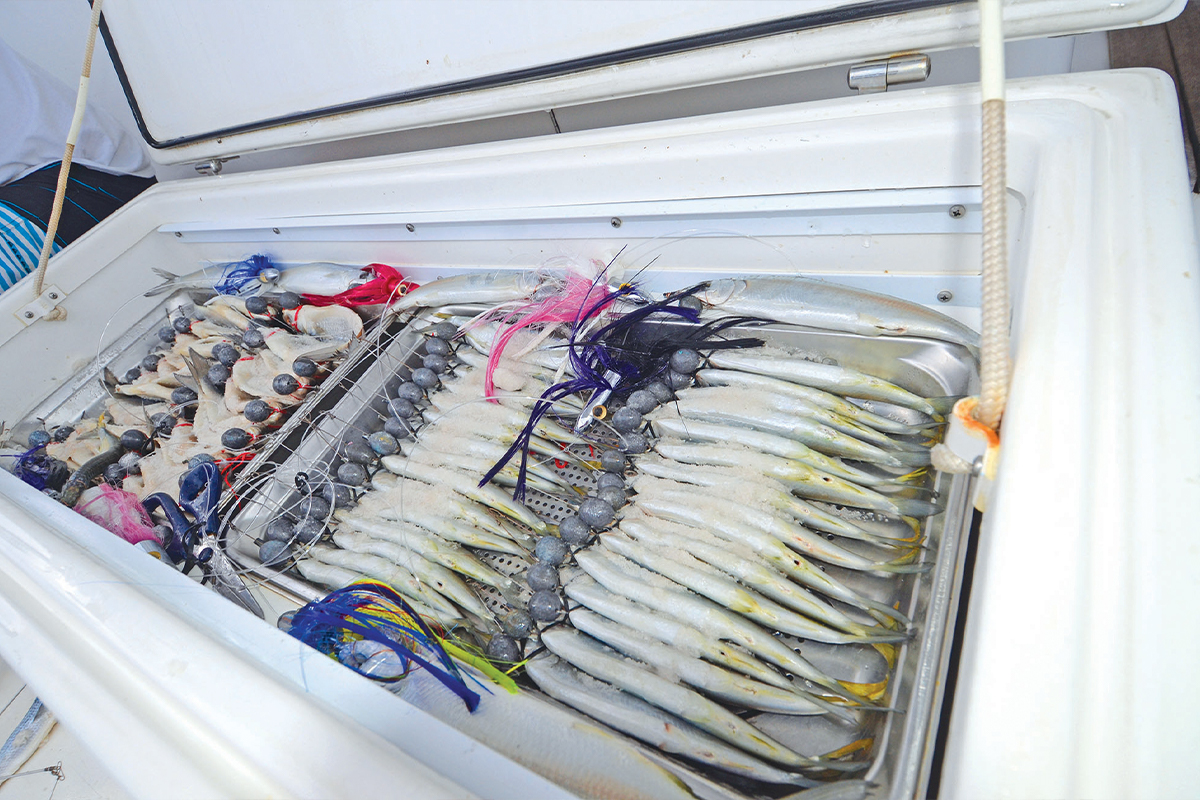
Keep baits on a bait tray with a liberal coat of kosher salt. Photo courtesy Ric Burnley
The Baitmaster’s Story
Since June of 1993, Baitmasters of South Florida has been preparing and shipping top quality rigged and unrigged bait, chum, rigging supplies and more. With an international client list and a body of tournament-winning captains and crews who credit their baits for victory, Baitmasters has set the standard. From sourcing, selection, preparation and packaging of baits, nothing happens by accident. Baitmasters owner Mark Pumo details the process and what goes into consistently producing and distributing quality baits on a global scale. The most important part of catching bait is what happens to it immediately after baits come out of the water, Pumo describes. We catch several million ballyhoo each year. When, how and at what temperature the fish enter the brine is the most important factor in the process. When fish come out of the water, they are all alive. A fish that dies in the net is much worse than a fish that dies in slush brine. The benefits include: theyre not missing scales, their fins and beak are intact, the color is much better, they are going to look fresh when thawed, Pumo says. The brine that Baitmasters uses to prepare their baits– Magic Brine, is the same that the company sells to customers. It a proprietary brine that weve tested over the years. After more than 20 years experience, through trial and error and with the assistance of scientists, we believe that we have the perfect recipe, Pumo states proudly. When our baits are thawed, they almost look mishandled, there has been very little enzymatic breakdown, Mark states. Our ballyhoo are harvested with a lampara net. Our fisherman fishes for us exclusively. This provides a distinct advantage because we know the product that we get is perfect all of the time. While their bait is flash frozen in brine at -30 degrees Fahrenheit, it is designed to keep in customers freezers as well. Baits can last three years or longer. For long term storage, they should be kept in chest freezers. Home freezers have a daily defrost cycle that causes temperature fluctuation that will ruin the baits in a matter of months, Pumo says. Is there anything that Pumo would change about the Baitmasters business model? I would love to have a percentage of our customers tournament winnings. It would be tens of millions, he says with a laugh.












